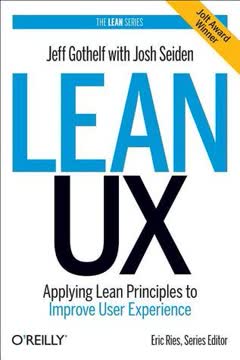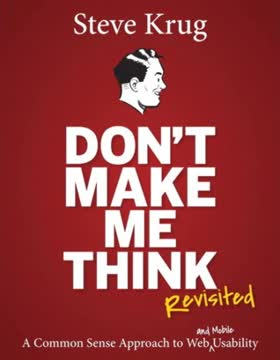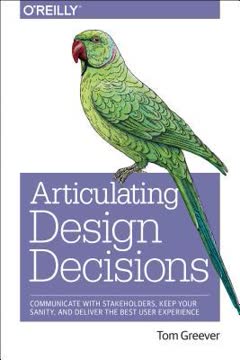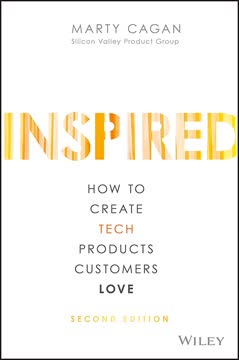Key Takeaways
1. Information Architecture is the Art and Science of Findability.
The art and science of shaping information products and experiences to support usability and findability.
More than just websites. Information architecture isn't limited to the digital realm; humans have been organizing information for centuries, from ancient clay tablets to library card catalogs. On the web, it's about structuring shared information environments so people can actually find what they need. Think of it as bringing principles of design and architecture to the digital landscape.
It's about order. Just like a well-designed building or a well-organized library, a good information architecture provides a logical structure that helps people understand where they are and where they can go. Without it, digital spaces become confusing mazes, frustrating users and hindering their ability to complete tasks or find answers. It's the invisible framework that makes digital experiences usable.
Why it matters. Poor information architecture costs organizations time and money through lost productivity, missed opportunities, and frustrated users. Good IA, conversely, enhances brand value, improves efficiency, and makes information systems easier to manage and maintain. It's a critical investment for any substantial digital presence.
2. It's All About Users, Content, and Context.
Users. Content. Context. You'll hear these three words again and again throughout this book.
The core model. Effective information architecture balances the needs of users, the nature of the content, and the context of the business or organization. You can't design in a vacuum; ignoring any one of these pillars leads to flawed architecture. This simple model is a powerful tool for framing problems and finding balanced solutions.
Understanding the pillars.
- Users: Who are they? What are their needs, behaviors, and mental models?
- Content: What information exists? What are its formats, structures, volume, and dynamism?
- Context: What are the business goals, politics, culture, technology, and resources?
Interdependent ecology. These three elements form a complex, adaptive information ecology. Changes in one area inevitably impact the others. A successful IA design must understand and align with the unique mix of capabilities, aspirations, and resources within this ecology.
3. Users Seek Information in Complex, Iterative Ways.
Seeking something you know is there... is quite a different information need than learning about a topic...
Beyond simple lookup. The "too-simple" model of information seeking (user asks question, gets answer) rarely reflects reality. Users often don't know exactly what they want, lack the language to express it, or discover new information that changes their needs mid-search. Information seeking is frequently iterative and interactive.
Varieties of needs. Users engage in different types of information seeking:
- Known-item seeking: Finding something specific (like a phone number).
- Exploratory seeking: Browsing to learn about a topic without a precise target.
- Exhaustive research: Trying to find everything on a subject.
- Refinding: Locating information previously encountered.
Integrated behaviors. Users combine searching, browsing, and even asking others for help in a single finding session. A good IA supports this "berry-picking" behavior, allowing fluid movement between different finding methods and adapting as the user's understanding evolves.
4. IA is Built from Interconnected Systems.
Information architecture is much more than just blueprints that portray navigational routes and wireframes that inform visual design.
Beyond the visible. While diagrams like blueprints and wireframes help visualize IA, much of its power lies in invisible components and the interconnectedness of its systems. Users interact with the surface, but a complex engine runs underneath.
Core components: IA is comprised of fundamental systems:
- Organization Systems: How information is categorized and grouped.
- Labeling Systems: How information and categories are represented.
- Navigation Systems: How users browse and move through information.
- Search Systems: How users query and retrieve information.
- Metadata & Vocabularies: The underlying data and terms that connect systems.
Holistic design. These systems are not isolated; they are deeply interdependent. A change in one system, like updating a controlled vocabulary (metadata), can impact others, like improving search results (search) or refining menu options (labeling/navigation). Designing them together is crucial for a cohesive user experience.
5. Organizing Information is Inherently Difficult and Subjective.
The beginning of all understanding is classification.
Human challenge. Organizing information is fundamental to human understanding, but it's fraught with difficulty. Language is ambiguous (is a tomato a fruit, vegetable, or berry?), content is heterogeneous (mixing documents, videos, and applications), and different people have different perspectives and mental models.
Exact vs. ambiguous schemes.
- Exact: Alphabetical, chronological, geographical. Easy to design/use if you know what you're looking for.
- Ambiguous: Topic, task, audience, metaphor. More useful for browsing and discovery, but harder to design due to subjectivity and ambiguity.
Structures matter. Beyond schemes, the structure defines navigation:
- Hierarchy: Simple, familiar parent-child relationships (like a tree).
- Database: Structured fields and relationships (leveraging metadata).
- Hypertext: Flexible, non-linear links (can be confusing if overused).
Social classification. User-generated tags and folksonomies offer emergent organization, but require careful integration with traditional methods to ensure findability and consistency.
6. Labels Are Quietly Powerful and Must Be User-Centered.
Labeling is a form of representation.
Communicating meaning. Labels are shortcuts that represent larger chunks of information, allowing users to quickly understand content and navigation options without being overwhelmed. Effective labels communicate efficiently, speaking the user's language.
Varieties of labels. Labels appear as:
- Contextual links within text.
- Headings that structure content.
- Navigation system choices.
- Index terms for searching/browsing (keywords, tags).
- Iconic labels (pictures), though often ambiguous.
Consistency is key. Within any labeling system (navigation bar, index, etc.), consistency in style, presentation, syntax, granularity, and comprehensiveness is crucial for predictability and ease of learning. Inconsistent labels confuse users and erode trust.
Finding the right words. Sources for labels include existing sites (yours, competitors'), controlled vocabularies, content analysis, authors, user advocates, and direct user input (card sorting, search logs, tag analysis). Tuning and tweaking are always necessary as language and content evolve.
7. Navigation Provides Essential Context and Flexibility.
Just wait, Gretel, until the moon rises, and then we shall see the crumbs of bread which I have strewn about; they will show us our way home again.
Preventing users from getting lost. Navigation systems are the wayfinding tools of the digital world, helping users understand where they are (context) and where they can go (flexibility). Getting lost online is frustrating and costly.
Types of navigation.
- Embedded: Integrated within pages (global, local, contextual links).
- Supplemental: External tools (sitemaps, indexes, guides, wizards).
Building context. Since users can enter a site anywhere, providing clear contextual clues (site identity, location in hierarchy, breadcrumbs) is paramount. A Navigation Stress Test helps identify where users get lost.
Improving flexibility. While hierarchy provides structure, hypertext allows lateral and vertical movement. Navigation systems must balance the clarity of structure with the flexibility of links, avoiding overwhelming users with too many options. Advanced approaches like personalization, visualization, and social navigation offer further flexibility but come with their own challenges.
8. Search is a Critical, Complex System, Not Just an IT Problem.
Search is not an IT thing.
More than a box. While users see a simple search box, a search system involves complex components: indexing, retrieval algorithms, query builders, search zones, and result presentation. It's a core part of IA, not just a technical function.
When to implement. Search is necessary when:
- Content volume is large.
- The site is fragmented across silos.
- Content is highly dynamic.
- Users expect it (which is almost always now).
Beyond full-text. Effective search involves choosing what to search (specific content components, search zones) and how to present results (sorting, ranking, clustering). Understanding user needs (recall vs. precision) is key to configuring algorithms and interfaces.
Supporting the user. Design the interface for simplicity ("The Box"), but provide support for revision when users get stuck (restating queries, explaining results, integrating with browsing). Don't leave users at a dead end.
9. Metadata and Controlled Vocabularies Are the Glue.
Metadata and controlled vocabularies present a fascinating lens through which we can view the network of relationships between systems.
Data about data. Metadata describes content objects (documents, images, etc.) to improve navigation and retrieval. It's the key to applying the power of structured databases to the messy world of web content.
Controlling language. Controlled vocabularies are defined subsets of natural language used for consistency. Types include:
- Synonym Rings: Connect equivalent terms for retrieval.
- Authority Files: Lists of preferred terms.
- Classification Schemes: Hierarchical arrangements of terms (taxonomies).
- Thesauri: Integrate equivalence, hierarchical, and associative relationships.
Semantic relationships. Thesauri model relationships:
- Equivalence (Preferred Term, Variant Term)
- Hierarchical (Broader Term, Narrower Term)
- Associative (Related Term)
Faceted classification. Organizing content by multiple dimensions (topic, product, audience, etc.) provides flexible navigation and powerful search filtering ("guided navigation"). This approach embraces the multidimensional nature of content.
10. Effective IA Requires a Structured Process: Research, Strategy, Design.
The research phase begins with a review of existing background materials and meetings with the strategy team, aimed at gaining a high-level understanding of the goals and business context, the existing information architecture, the content, and the intended audiences.
Avoid the abyss. Skipping research and strategy leads to costly mistakes and dysfunctional projects. A phased approach provides direction and ensures alignment across teams.
The process:
- Research: Understand context (goals, politics, tech), users (needs, behaviors), and content (inventory, analysis). Methods include interviews, heuristic evaluations, user testing, card sorting, search-log analysis.
- Strategy: Develop a high-level conceptual framework based on research. Define administration, technology, top-down/bottom-up emphasis, organization/labeling, document types, metadata, and navigation.
- Design: Translate strategy into detailed deliverables (blueprints, wireframes, content models, vocabularies). Collaborate with other designers.
TACTical approach. Strategy development is iterative: Think, Articulate, Communicate, Test. Use visuals (diagrams, wireframes) and narratives (scenarios, stories) to communicate ideas and gain buy-in.
11. IA is a Human Practice with Significant Ethical Dimensions.
Are you aware that the practice of information architecture is riddled with powerful moral dilemmas?
Invisible influence. Information architecture is not ethically neutral; decisions about structure, labels, and access have real-world consequences, often invisible to users but impacting lives and perceptions.
Ethical considerations:
- Intellectual Access: What information is made findable? What is hidden or biased?
- Labeling: Do labels perpetuate stereotypes or cause confusion/pain?
- Categories: What is included/excluded? How does classification shape understanding?
- Granularity: Does the level of detail empower or restrict users/practitioners?
- Physical Access: Is the architecture usable by people with diverse physical capabilities (universal usability)?
- Persistence: What are the long-term consequences of our design decisions?
Shaping the future. We can choose to ignore these dilemmas or actively address them. By understanding the potential impact of our work and collaborating with others focused on ethics and accessibility, we can design more responsible and equitable information systems.
12. Enterprise IA is the Ultimate Challenge and Opportunity.
What's enterprise information architecture (EIA)? Quite simply, the practice of information in the enterprise setting.
Beyond size. Enterprises are defined less by size and more by fragmentation, silos, and political tug-of-wars between centralization and autonomy. This makes designing a coherent IA incredibly difficult.
The goal. EIA isn't about forced centralization, but about identifying efficient ways to connect users with needed information across silos. It's about balancing enterprise-wide consistency with local flexibility.
Practical approaches.
- Top-Down: Improve sitemaps, slim down indexes, develop targeted guides.
- Bottom-Up: Build single-silo content models, prioritize metadata development (e.g., simple attributes first), reverse-engineer content from search logs.
- Search: Implement simple, consistent interfaces; analyze logs; prioritize queries (Best Bets).
- Guerrilla: Enable cross-departmental content creation (klogs, wikis), leverage staff directories, explore social bookmarking.
Building competency. EIA often evolves from informal communities to formal teams and dedicated business units. This requires strategic effort to gain management buy-in, secure funding, and position EIA as a valuable, permanent infrastructure service.
Last updated:
Review Summary
Information Architecture for the World Wide Web receives mixed reviews. Readers appreciate its comprehensive coverage of IA principles and practical advice for large-scale web projects. Many find it an essential resource for understanding web organization and user experience. However, some criticize its length, density, and occasional outdated information. Positive reviews highlight its value for UX designers and web professionals, while negative reviews mention difficulty maintaining engagement throughout. Overall, it's considered a foundational text in the field, albeit with some limitations.
Similar Books










Download PDF
Download EPUB
.epub digital book format is ideal for reading ebooks on phones, tablets, and e-readers.





